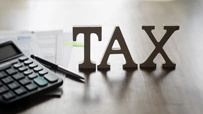Overconfidence Bias and Its Cost in Investing
Disclaimer: Ujjivan Small Finance Bank does not offer personal finance advice or products. This blog is written for generic information only.
July 11, 2025

Overconfidence is a well-documented behavioural bias in finance – often described as an “illusion of control” where investors overestimate their ability to predict or influence market outcomes. This bias affects everyone from retail stock traders to professional fund managers. In the Indian context, rapid economic growth, digital access to markets, and recent bull runs have sometimes fuelled overconfidence among investors.
Both retail and institutional investors can fall prey to this, leading to misallocation of capital. For example, pouring funds into overhyped equities or chasing quick profits while underestimating risks. This article explores what overconfidence bias entails, how it manifests in Indian investing behaviour, the real and opportunity costs it imposes, and why the stability of Fixed Deposits (FDs) offers a valuable counterbalance.
The goal is to ground our discussion in research, historical data, and observable trends – avoiding mere opinion – and to highlight how disciplined planning (including humble FDs) can mitigate the risks of overconfidence in investing.
What Is Overconfidence Bias?
Overconfidence bias is a cognitive error that leads individuals to overestimate their knowledge and abilities, especially in decision-making under uncertainty. In investing, an overconfident person might believe they have superior skill or insight, when in reality their success may be due to luck or market conditions. Psychologically, most people tend to think they are above-average in various domains, a statistical impossibility, which makes them susceptible to this bias.
This overconfidence often manifests as an inflated sense of control or unwarranted optimism. Investors start believing they can consistently beat the market, predict price movements, or pick “winning” stocks, despite the fact that markets are influenced by countless unpredictable factors. This misplaced confidence can lead to poor decision-making: examples include excessive trading, taking outsized risks, or ignoring warning signs.
Studies have shown that overconfident investors tend to trade too frequently, incurring high transaction costs that drag down their returns. They may also hold under-diversified portfolios or double-down on risky bets, underestimating the probability of adverse outcomes.
Classic research by Barber and Odean (2000) found that individual investors who traded most actively (often due to overconfidence in their stock-picking) earned significantly lower returns than the market averages, after costs.
Manifestations in Indian Retail and Institutional Investing
1. Retail Investors
In India, the stock market’s allure – amplified by digital platforms and economic optimism – has drawn millions of first-time investors in recent years. This democratization of investing is a positive trend, but it has also bred overconfidence among many retail participants.
With easy-to-use trading apps and a surge of market influencers touting success stories, it’s common to see retail investors believe that beating the market is easy or just a matter of timing. Behavioural finance concepts like the illusion of control are clearly at play – for instance, newcomers who made quick profits in the 2020–2021 rally often attributed it to skill rather than luck, reinforcing overconfidence in their stock-picking abilities. This confidence can be fragile: when market conditions turn, many such investors realize the difficulty of consistent outperformance.
One observable pattern is excessive trading and speculation among overconfident retail investors. India’s markets saw a 400% rise in day-trading activity between FY2019 and FY2023, with the number of individuals doing intraday trades rocketing from about 1.5 million to 6.9 million in that period.
A Securities and Exchange Board of India (SEBI) study found that a majority of these active traders were young and from smaller cities – and unfortunately, most were losing money. About 70% of day traders in the equity segment incurred losses, with the proportion of loss-makers as high as 76% among traders under 30, and 80% for those executing 500+ trades a year. Loss-making traders tended to trade far more frequently than profitable traders, indicating that overconfidence-driven overtrading was damaging their performance.
Many retail investors, emboldened by a bull run or a few winning trades, engage in high turnover and even futures/options speculation, only to erode their capital through fees and mistakes. Overconfidence also shows up as herding and chasing hot tips – for example, piling into popular IPOs or trendy stocks because “everyone else is,” assuming one can’t go wrong if the crowd is right. This often happens in bull markets; a study on the Indian stock market found evidence that investors became especially overconfident during pre-crash periods (e.g. just before the 2008 global crash, or in the 2015–2020 rally), only to become more cautious after major corrections. Such cycles suggest that retail sentiment swings from euphoria to fear, with overconfidence peaking when things seem persistently good.
2. Institutional Investors
Professional money managers and institutional investors are not immune to overconfidence either. In fact, the bias can be just as costly at the institutional level, albeit in different ways. Fund managers, armed with research teams and complex models, may develop unwarranted faith in their forecasts or stock-picking prowess. This is reflected in the persistent difficulty of active funds beating the market. Over time, very few actively managed mutual funds consistently outperform their benchmarks, especially after fees.
In India, for example, many equity mutual funds focused on blue-chip stocks have often been outpaced by low-cost index funds that simply track the market. This underperformance may suggest that even seasoned professionals – with all their analysis – struggle to predict market winners year after year. Overconfidence at the institutional level might lead to concentrated bets on certain sectors or stocks (believing one has superior insight), or to low cash buffers because the manager is sure of forthcoming gains.
A cautionary tale is that of numerous star fund managers who delivered a few years of high returns and then faced heavy losses when their bets went wrong – a sign that skill was overestimated and risk underestimated. The “if the experts can’t do it, what makes you think you can?” lesson resonates here. Additionally, institutional overconfidence can contribute to market-wide effects: for instance, if many fund managers simultaneously become overconfident on India’s growth story, they might all overweight certain equity sectors, pumping valuations to unsustainable levels. Such mispricing and eventual correction hurt not just those managers’ funds but also the broader capital allocation in the economy.
The Role of FDs in a Balanced Portfolio
In investing, humility and discipline often trump hubris. One practical way to instil discipline and mitigate the risks of overconfidence is by ensuring a portion of your portfolio is in stable, guaranteed-return instruments – and in India, fixed deposits (FDs) are a prime example of such tools. FDs have long been a staple of Indian household finance, and for good reason.
They offer certainty and capital preservation: when you put money in a bank fixed deposit, you know exactly what return you will get (the interest rate is fixed upfront) and your principal is protected from market ups and downs. In fact, fixed deposits “offer stability – your principal stays safe no matter how the markets fluctuate”. This guaranteed, predictable nature of FDs provides a valuable counterbalance to volatile assets like stocks.
Let’s consider how FDs can help an investor prone to overconfidence: Suppose you are excited about the stock market and expect, say, 15% returns from equities. A prudent approach might be to still keep a chunk of your savings in FDs or other fixed-income instruments. Those FDs act as an anchor for your portfolio.
If your stock picks don’t perform as expected (or in a bad year when stocks might even decline), the interest from FDs ensures that not all your money is subject to the same risk. During market downturns or unforeseen events, the FD portion won’t lose value – it continues to earn interest and provide liquidity.
This can prevent panic-selling of stocks because you know some money is safely compounding. Moreover, FDs inculcate a form of financial discipline: they typically have lock-in periods or penalties for early withdrawal, nudging investors to stay invested for the term.
This discourages the kind of impulsive reallocation that overconfidence might cause. Instead of trying to time every rupee in and out of the market, an investor with FDs is effectively saying, “I’m securing a base return for part of my wealth, and I won’t fiddle with it.” That mentality can spill over into a more patient approach with other investments as well.
It’s worth noting that a vast majority of Indians intuitively recognize the value of safety. While this skew towards safe assets might be partly due to limited risk appetite or lack of awareness, it underscores how FDs serve as a cornerstone of financial planning.
Importantly, we should view FDs not as “competition” to equity investments but as complements. Equities can deliver higher long-term growth, but FDs offer stability and predictability. A portfolio that blends the two can achieve a superior risk-adjusted return than one that is 100% equity fuelled by overconfidence. For instance, even a 70% equity / 30% fixed-income mix can greatly soften the blow in a market crash and give the investor confidence to stay the course. Many advisors suggest that asset allocation (deciding the mix of safe vs. risky assets) is more crucial to long-term success than stock picking. Including fixed deposits or bonds is a key part of that allocation. FDs also suit specific goals in disciplined planning – e.g. parking the money for a child’s tuition due next year in an FD makes sense, rather than risking it in stocks for a potentially small extra gain. By guaranteeing that funds for critical goals won’t evaporate, FDs enforce prudence.
Final Thoughts
Overconfidence bias, whether in a novice day-trader or a veteran fund manager, is a silent portfolio killer. It lures investors into a false sense of security about their predictions and strategies, only to expose them to greater risks and potential losses. History and research have shown that unchecked overconfidence leads to everything from underperforming investments to full-blown market bubbles. The Indian market has provided its own lessons – periods of frenzied stock buying followed by sharp corrections that humbled many “gung-ho” investors
Disclaimer:
The contents herein are only for informational purposes and generic in nature. The content does not amount to an offer, invitation or solicitation of any kind to buy or sell, and are not intended to create any legal rights or obligations. This information is subject to updation, completion, amendment and verification without notice. The contents herein are also subject to other product-specific terms and conditions, as well as any applicable third-party terms and conditions, for which Ujjivan Small Finance Bank assumes no responsibility or liability.
Nothing contained herein is intended to constitute financial, investment, legal, tax, or any other professional advice or opinion. Please obtain professional advice before making investment or any other decisions. Any investment decisions that may be made by the you shall be at your own sole discretion, independent analysis and evaluation of the risks involved. The use of any information set out in this document is entirely at the user’s own risk. Ujjivan Small Finance Bank Limited makes no representation or warranty, express or implied, as to the accuracy and completeness for any information herein. The Bank disclaims any and all liability for any loss or damage (direct, indirect, consequential, or otherwise) incurred by you due to use of or due to investment, product application decisions made by you on the basis of the contents herein. While the information is prepared in good faith from sources deemed reliable (including public sources), the Bank disclaims any liability with respect to accuracy of information or any error or omission or any loss or damage incurred by anyone in reliance on the contents herein, in any manner whatsoever.
To know more about Ujjivan Small Finance Bank Products Visit:"https://www.ujjivansfb.in"
All intellectual property rights, including copyrights, trademarks, and other proprietary rights, pertaining to the content and materials displayed herein, belong
to Ujjivan Small Finance Bank Limited or its licensors. Unauthorised use or misuse of any intellectual property, or other content displayed herein is strictly prohibited and the same is not intended for distribution to, or use by, any person in any jurisdiction where such distribution or use would (by reason of that person’s nationality, residence or otherwise) be contrary to law or registration or would subject Ujjivan Small Finance Bank Limited or its affiliates to any licensing or registration requirements.
FAQs
1. What is overconfidence bias in investing?
Overconfidence bias in investing is a cognitive bias where an investor overestimates their skill, knowledge, or predictive ability in financial decisions. This often leads to excessive trading, taking on too much risk, or ignoring data that contradicts their assumptions.
2. How has overconfidence bias affected Indian investors?
In India, overconfidence bias has been observed in both retail and professional investors during bull markets. For example, many new retail traders during recent market rallies believed they could consistently beat the market – leading to over-trading and speculative bets. A SEBI study found that ~70% of frequent day traders ended up losing money, partly because overconfident traders kept churning their portfolios. Similarly, some Indian mutual fund managers, buoyed by a few good years, failed to diversify or cut losses, resulting in underperformance when market conditions changed. Overall, overconfident investors in India have faced lower returns, higher losses, and misallocated capital (such as chasing IPO fads or glamour stocks that didn’t pan out).
3. Can professional or institutional investors also be overconfident?
Yes – overconfidence is not limited to amateurs. Institutional investors (like fund managers, analysts, even CEOs making investment decisions) can also exhibit overconfidence. This may lead them to assume they have superior information or forecasting ability. A clear evidence is that a majority of actively managed funds struggle to beat their benchmarks over time, suggesting that some managers were overconfident in stock-picking abilities.
There have been cases globally and in India where hedge funds or banks took outsized bets (e.g. excessive exposure to certain sectors or complex derivatives) believing they “couldn’t lose,” only to incur large losses. Overconfidence at the institutional level can thus contribute to poor fund performance and even financial crises when risk controls are bypassed due to managerial overestimation of their own acumen.
4. What are the main costs of being overconfident as an investor?
The costs of overconfidence are both direct and indirect. Directly, an overconfident investor may experience real losses – for instance, by trading too frequently and racking up transaction costs that erode returns, or by holding a losing investment too long (thinking it will rebound) and seeing their capital shrink.
Indirectly, there’s an opportunity cost: while money is tied up in unproductive or losing bets, the investor misses the chance to earn stable returns elsewhere.
Latest Blogs

ITR-1 (Sahaj) Restrictions: Income Sources Not Allowed & Filing Rules
With just a few days left before the 15 September 2025 deadline for filing Income Tax Returns (ITRs) for Assessment Year (AY) 2025-26, many taxpayers are rushing to submit their forms online.

GST Rate Cut on Electronics: What It Means for Consumers and Retailers
India’s Goods and Services Tax (GST) system has entered a new era with the rollout of GST 2.0, effective from September 22, 2025.

Banking Safety Guide: How to Avoid QR Code Frauds While Making Payments
India’s love for QR code payments has made transactions lightning-fast, but also opened a new front for cybercriminals.

Scam Alert! Phishing, Vishing, and Smishing Can Drain Out Your Finances
Digital banking in India has transformed the way we manage money.

India’s New GST Reform Bill: What GST 2.0 Means for You
India’s indirect tax system is entering a landmark new phase.


